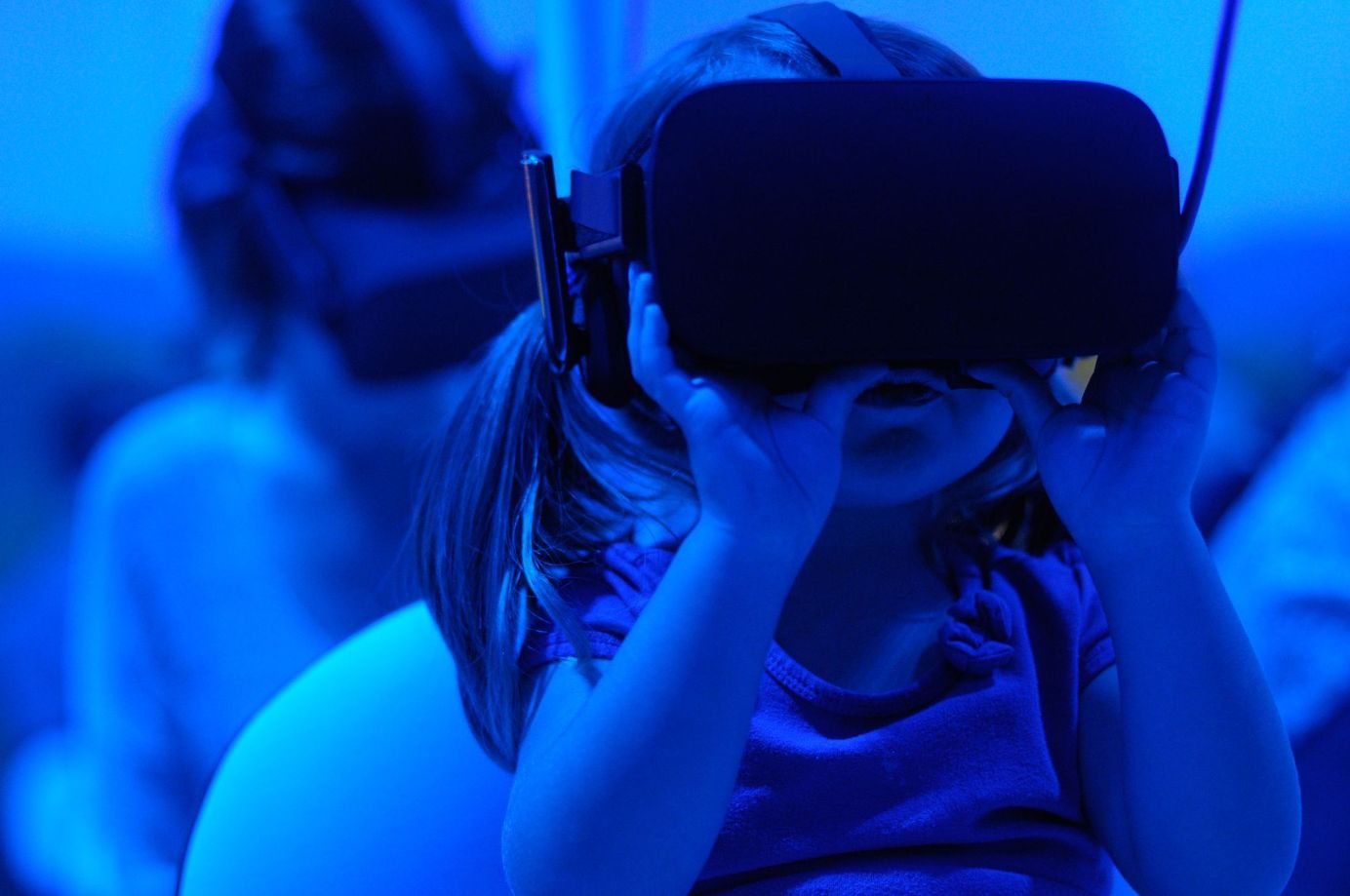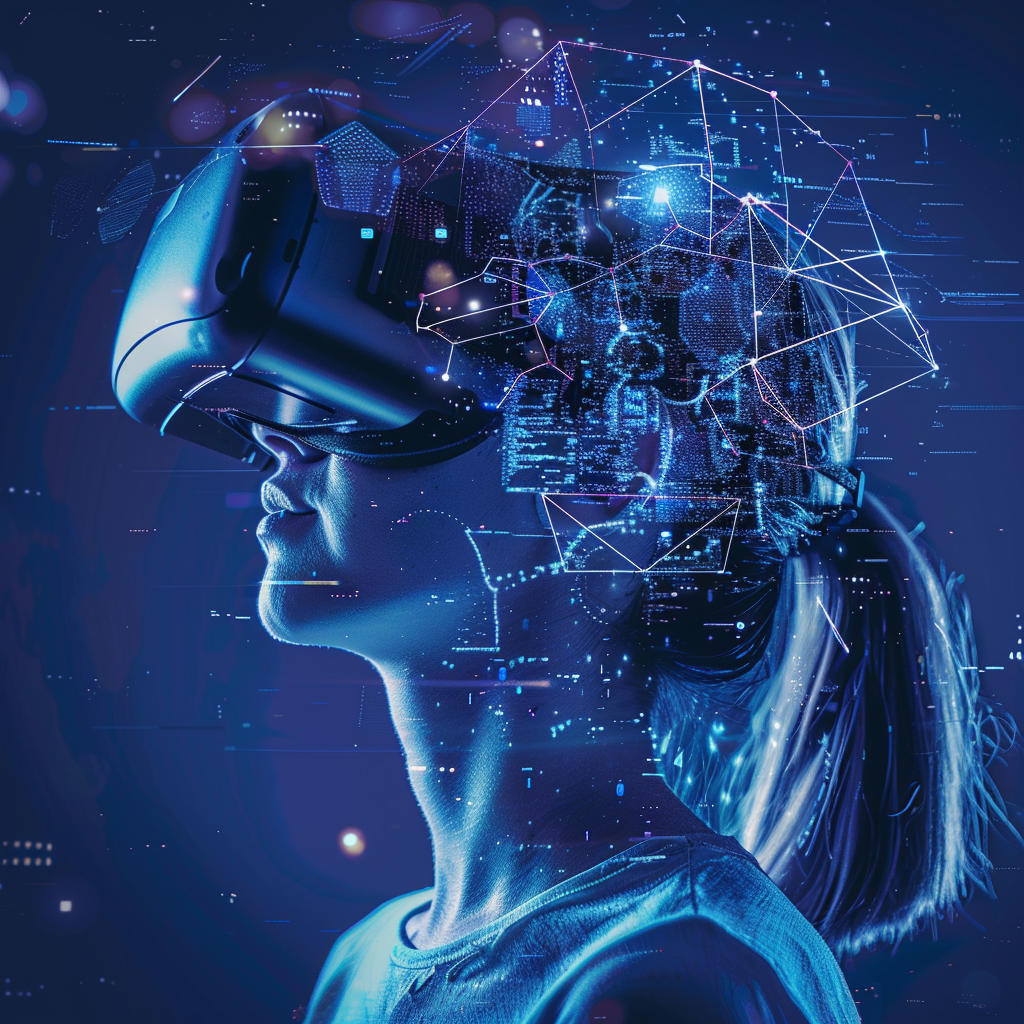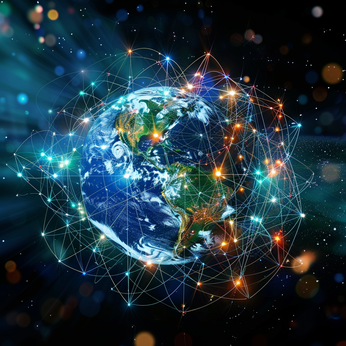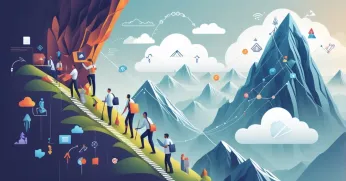
Metaverse: The Disruption Of Our Physical And Digital World
Definitely, the metaverse is going to update the way we live and experience relationships and the environment around us becoming way more than a social platform and network.
"The best way to understand the metaverse is to experience it yourself, but it's a little tough because it doesn't fully exist yet." (Mark Zuckerberg)
Everyone is talking about the metaverse nowadays, as the next revolutionary trend that is going to transform our digital life. However, the definition of the metaverse is not so clear, and everyone seems to have a different opinion about it.
Meta.. what?
Originally, the name “Metaverse” was born with Neal Stephenson’s and his seminal 1992 cyberpunk novel “Snow Crash'', in which the term metaverse was an “imagery place” that is “made available to the public over the worldwide fiber-optics network” and projected onto virtual reality googles. Thus, developers can build in it a reality that does not exist in which the 3D rules are ignored and avatars meet in 3D virtual environments.
Furthermore, the term metaverse has been mentioned several times by Mark Zuckerberg, CEO of the rebranded Meta (previously called Facebook). Indeed, during the Facebook connect keynote presentation, the new name of the company was revealed for the first time, although the meaning that Zuckerberg gave to the metaverse concept is way different from what Stephenson did imagine in his science fiction novel. However, several online games such as Fortnite, Minecraft, Roblox, and other online gathering rooms already tried to create a “real metaverse”, made of augmented (AR) and virtual reality (VR), 3D holographic, avatars, and videos; probably without even knowing what metaverse concepts are. So what do we mean with this hyper-real world called “metaverse”?
An even more immersive and embodied internet
"The best way to understand the metaverse is to experience it yourself, but it's a little tough because it doesn't fully exist yet" announced Zuckerberg, in the Facebook Connect keynote.
Moreover, he gave a brilliant description of the metaverse as an "even more immersive and embodied internet" where "you're gonna be able to do almost anything you can imagine—get together with friends and family, work, learn, play, shop, create—as well as entirely new categories that don't really fit how we think about computers or phones today." However, while metaverse looks like an incredible, sci-fi, fantasy place, the term is still vague and difficult to understand or even imagine. A shared social space with avatars? A virtual world inhabited by avatars who interact with each other?
While on social media individuals are recognized by having usernames, in metaverse they are represented by customizable avatars that can move, speak, and interact. Similar to what we have already seen in online gaming settings, the metaverse is a persistent virtual world, in which these VR avatars live and act across online sessions while being supported by different virtual reality technologies.
Although metaverse is still an ideal and working in progress environment, probably it could take five to 10 years before the key features of the metaverse become mainstream and fully realized. Nevertheless, aspects of the metaverse are already in use in our “online life” such as ultra-fast broadband speed, virtual reality headsets, and the fact we are always connected to the online world (just think you are connected on the web to read this article!). Thus, the idea of a “centralized virtual world”, that goes in parallel with our actual physical world, is what metaverse aims to be. Nothing so mind-blowing due to the fact that worldwide, millions of people spend several hours/day interacting on virtual platforms and social spaces (e.g., the case of Roblox and Fortnite).
Moreover, metaverse and its relation to a secure and persistent virtual experience have also been related to non-fungible tokens (NFTs) and cryptocurrencies, while empowering virtual productivity platforms. In fact, Microsoft and Facebook have already announced that innovative ways of collaborating online are possible, imaging a future in which social interactions, workplaces, learning, or education are lived in digital and virtual spaces, while also generating innovative human experiences [1]. And even Nike launched a new digital experience known as Nikeland on Roblox.
Feel like we’re together when we’re not
Joining an online community doesn’t sound so disruptive. Indeed, their first appearance on the web was already in the mid of ‘80s, rapidly growing with chat rooms, AOL direct messages, and social media sites later in the ‘90s. Probably most of you still remember the game World of Warcraft, becoming popular in the early 2000s. The truth is that games like World of Warcraft or Fortnite, with their chats, gaming, and online social interactions are transforming the way younger generations are considering and evaluating human interactions. Hence, either in a VR or AR space, metaverse aims to merge the physical environment with a digital space in which a normal daily life, made of social exchange, shopping, working, productivity, and entertainment is possible within a click and a pair of sunglasses (what Meta already proposed). Thus, this great experience within a simple action can begin [1].
“This metaverse concept gives us the opportunity to create any universe that we’ve ever imagined”, said John Egan the CEO of L’Atelier BNP Paribas, focused on emerging technologies. Definitely, the metaverse is going to update the way we live and experience relationships and the environment around us becoming way more than a social platform and network [1].
Innovative solutions to workplaces were proposed by the Oculus Quest headset connected to a productivity app called Immersed. This app is paired with computers, and in the headset, creates a workspace able to arrange multiple and customizable screens, and with no need for monitors anymore. Imagine being immersed in a VR setting during your working hours; such an incredible life-changing habit. Facebook, Microsoft, and Samsung have already invested in immersed VR technologies, making VR a “quality of life tool”. Besides, Horizons Workrooms was announced by Facebook as a novelty to Zoom meetings, enhancing the capabilities of remote workers. Lastly, the metaverse would even guarantee a space to allow a full-time job and earn money. This was the example of the metaverse entrepreneur Carrie Tatsu, who has spent more than 15 years designing, marketing, and selling avatars, pets, and accessories for citizens of Second Life, a game launched in 2003 that represents a digital world in which users can buy lands, and spend on customizable items [1].
Reality or dream?
Recently, German research that was published by DAK-Gesundheit showed that when the pandemic started, the use of social media and online games increased by 60% in 2020 compared to 2019, in children between 12 and 17 years old. Is it just time spent in front of screens and online interactions or something more? This is the concern that arises when advanced technologies are intimately coupled with our daily life. In this sense, the metaverse is an extension of the internet and the relation we currently have with it. However, we are still coping with the problems that the mobile internet creates such as cyber-attacks, catfishing, harassment, hate speech, and that may increase if the reality we create is the metaverse. Thus, Matthew Ball, author of “The Metaverse: And How it Will Revolutionize Everything” said that more restrictive measures and cybersecurity approaches should be considered to protect data privacy, data right, data security, and misinformation, especially when the reality is translated into a digital environment with “virtual” avatars.
So, which problems can we solve with the metaverse?
Whether younger generations are already more comfortable switching to online gatherings, as shown by Travis Scott’s concert in Fortnite joined by 12 million people, for past generations the metaverse world may sound doubtful. Hence, we need to ask ourselves which benefits the metaverse is going to bring to our real-world life. Holding a corporate meeting with VR avatars could be more engaging than Zoom or live meetings, as well as, a simulated virtual world can allow exciting experiences that we would never do in real life. For example a test-driving a car in Fortnite or even buying expensive goods and so revolutionizing the way of doing shopping. However, a few concerns come up when thinking about the possibility to monetize and exchanging money in the metaverse with a real value. Nevertheless, although we are still far, the vision of metaverse is a digital space where we can generate opportunities, social networks, promote mental health, and extend its access worldwide [1].
Metaverse to increase empathy and inspire kindness
“I think that when you’re in a virtual space, they’re usually smaller, they’re usually more intimate. And I think that when we move into this world, where you really customize your avatar, you develop a more intimate relationship with the people you have online,” “Even though you’re behind a screen or you’re behind a headset, you still see somebody”, said Carrie Tatsu, metaverse entrepreneur.
In an up-and-coming metaverse project called “Noah’s Ark”, the virtual anime version of Sophia, worldwide known to be a humanoid artificial intelligence AI robot, is going to be tokenized. “We hope Sophia being AI will bring together humanity and technology to help humans attain our true nature of unconditional love and pure possibilities”, said Jeanne Lim, co-creator of Sophia.
Shifting social relationships on a digital space while transforming the way of human interaction, the 3D performance would be able to capture the natural movement of the body and human behavior. “We are fascinated with robots because they are reflections of ourselves.” Indeed, Meta is going toward this direction turning robots into humans, tackling the latest advances of artificial intelligence to enhance the sensitivity of touch by replicating this human capability in the physical world through robots. To generate this novel tactile sensing ecosystem to create AI-based touch systems, four aspects have been considered: hardware, simulators, libraries, benchmarks, and datasets [2].
DIGIT, a compact, and the high-resolution tactile sensor were introduced to improve robotic manipulation. Considering the importance of prototyping, debugging, and innovative advances, TACTO is a high-resolution vision-based tactile sensor to support simulations while boosting machine learning research, even without physical hardware and the need for time-consuming experiments. In partnership with Carnegie Mellon, Meta AI is working on ReSkin, an open-source touch-sensing synthetic skin for robotic hands. ReSkin would help robots to learn high-frequency tactile sensing over surfaces while collecting data to train AI models associated with touch tasks in which robots can learn to manipulate and interact with objects by applying the right “human pressure.” [2]
In summary, DIGIT and ReSkin combined with TACTO would facilitate tactile perception research to improve AI models that aim to recreate the human sense of touch. Although Meta AI is still at the beginning of this process, the development of robots with enhanced functions and abilities would be the future. Accompanied by AR and VR advances, the enhancement of touch-sensing functionalities would definitely disrupt different industrial sectors [2].
With the aim to bring the sense of touch into Metaverse, Zuckerberg was already a pioneer. Indeed, in the video, he was trying out “haptic gloves” to perform movements involving the hand such as shaking the hand, fist-bump, playing chess, and Jenga. These gloves mark the hand of who is wearing them, locating the human hand in a virtual reality space and their relation to virtual objects. The sense of pressure, texture, vibration are then simulated to reproduce the sense of touch and human-object interaction. A video from Meta shows how these haptic gloves work.
Building Metaverse with European talents
To build a virtual space, supported by the latest advances in AR and VR technologies, metaverse will unlock a variety of creative, social, and economic opportunities while merging the collaboration among developers, companies, digital creators, and policymakers. Metaverse cannot be owned. It is an extended internet, characterized by openness and interoperability that would create a sense of “virtual presence” disrupting social interactions. [3] To achieve its realization, in the coming years metaverse will invest in tech talents opening 10.000 new highly specialized job opportunities in the European Union (EU). In fact, the EU is a proper place to make investments due to innovative tech companies, large markets, the best universities, and highly qualified individuals. Besides, the EU plays a great role in determining the new regulations of the Internet, valuing a few factors such as free expression, data privacy and transparency, and individual rights, influencing and contributing to the growth of the digital economy. Thus, considering the popularity of Facebook in the EU, the companies announced that they will continue to invest in European talents to promote global innovation [3].
Innovating the education with Metaverse
In our century, remote learning has already become the reality of many students and workers, who rely on digital platforms such as Zoom or Teams and social technologies to foster their education. In addition, virtual and augmented reality have been proposed to upgrade the process of learning making it more stimulating and attractive while adapting to the 21st-century digital trends. Hence, AR has already revolutionized remote learning although the great impact on education will come with metaverse.
Metaverse will not be just a virtual space for social interactions or an innovative workplace station. Metaverse will transform the global education characterized by digital science, a tech campus, and located in a context of VR and AR platforms. Leading this transformative process are two main companies called “Credersi World” and “PixelMax” which put together science and tech educators at Credersi with the 3D tech disruptors at PixelMax to shape the future of education in the metaverse [4].
Over the last few months, these big companies were already operating to translate this vision into reality. Indeed, virtual spaces and tech campuses are in development. Credersi World is a virtual platform to reshape and reinforce students’ and employees’ skills toward future careers. Learning takes place in a virtual science and tech campus, made of shops, art galleries, cinemas, and cafeterias created with the help of mixed virtual reality technologies. Whether the Covid-19 pandemic did affect remote learning engagement and online courses, Credersi World aims to promote a more interesting and capturing way of learning in an immersive digital environment, thanks to advances of AI technologies improving human experiences while supporting these innovative visions [4].
The pandemic had a clear impact on the global economy making businesses and industries think about how to adapt, reshape to match future challenges while overcoming current difficulties. However, although advanced technologies are entering any industry sector, the need to revise education and learning to embrace the new, required workforces skills would be supported by the metaverse education, in which a culture of continuous personal development is promoted [4].
Furthermore, PixelMax technologies aim to satisfy customers with innovations while creating virtual platforms to enhance effective communication, collaborations, and social exchanges in real-time. PixelMax has already proposed virtual events and 3D environments implemented as virtual offices by several businesses in the perspective of a hybrid working framework that combines the physical world with an immersive reality [4].
The partnership between PixelMax and Credersi World would thus create a tech and science campus, to evolve the way of delivering a new level of education that is more engaging and immersive. Moreover, education and training will be revised to prepare the future generations for acquiring new skills in response to the challenges of the next decades characterized by science and technologies [4].

References:
- Clark, P. A. (2021). The Metaverse Has Already Arrived. Here’s What That Actually Means. Time. Available at: https://time.com/6116826/what-is-the-metaverse/ [Accessed on November 24, 2021]
- Biswas, D. (2021). Meta Is Cracking The Robotic Space, One Touch At A Time. Analyticsindiamag. Available at: https://analyticsindiamag.com/meta-is-cracking-the-robotic-space-one-touch-at-a-time/ [Accessed on November 24, 2021]
- Clegg, N. (2021). Investing in Europen Talent to Help Build the Metaverse. Meta. Available at: https://about.fb.com/news/2021/10/creating-jobs-europe-metaverse/ [Accessed on November 24, 2021]
- Lane, R. (2021). Innovating the education metaverse: MR virtual campus. Installation. Available at: https://www.installation-international.com/technology/immersive-tech/innovating-the-education-metaverse-credersi-worlds-immersive-mixed-reality-platform [Accessed on November 24, 2021]
Disclaimer: The views expressed here are not those of OpenExO Inc., its members, affiliates, or associates. The content is provided for informational purposes only, and should not be relied upon as legal, business, investment, or tax advice. You should consult directly your own appropriate advisors and professionals as to those matters.

ExO Insight Newsletter
Join the newsletter to receive the latest updates in your inbox.









